|
Terry-M
|
 |
« Reply #15 on: September 12, 2010, 08:48:24 PM » |
|
Hi Jeff, HDR chucked in for good measure, I don't like the 'greens' and don't know how to correct it I have tried HDR with various software on a number of occasions and have found it does tend the distort colours not really do any better that QU for dynamic range when you expose correctly to retain the highlights. QU Fill does a great job but you first do as Fred said and click on the appropriate rectangle to "recover" the highlights. I think most HDR software includes tone mapping which you can apply on any image without combining several. This produces a certain "look", often with colour distortion and noise when over-done. It's sort of interesting to play with but not exactly creative pushing a few sliders about  Terry. |
|
|
|
|
 Logged
Logged
|
|
|
|
|
Fred A
|
 |
« Reply #16 on: September 12, 2010, 09:07:13 PM » |
|
QU Fill does a great job but you first do as Fred said and click on the appropriate rectangle to "recover" the highlights. Jeff, It just occurred to me that a similar but far more radical condition exists in one of the sample images at http://www.ddisoftware.com/qimage/quality/raw.htmIf you look at the original on the left and decide that the clouds have to be retained, the a grid square is selected in Qimage Ultimate REFINE that will lock the clouds. Then some fill light to taste, and all is well. Fred |
|
|
|
|
 Logged
Logged
|
|
|
|
|
Jeff
|
 |
« Reply #17 on: September 13, 2010, 06:32:12 AM » |
|
Jeff,
Just tick the grid box where the blown cloud resides, and QU will reset the exposure knowing that you want the cloud marked as the main interest.
Fred
3rd image - just that Jeff |
|
|
|
|
 Logged
Logged
|
Grumpy
|
|
|
|
Jeff
|
 |
« Reply #18 on: September 13, 2010, 06:41:54 AM » |
|
Hi Jeff, HDR chucked in for good measure, I don't like the 'greens' and don't know how to correct it I have tried HDR with various software on a number of occasions and have found it does tend the distort colours not really do any better that QU for dynamic range when you expose correctly to retain the highlights. QU Fill does a great job but you first do as Fred said and click on the appropriate rectangle to "recover" the highlights. I think most HDR software includes tone mapping which you can apply on any image without combining several. This produces a certain "look", often with colour distortion and noise when over-done. It's sort of interesting to play with but not exactly creative pushing a few sliders about  Terry. I mostly shoot HDR for night shots, had such a shoot last Friday night and it was a disaster, all grossly under exposed and useless, so whilst I was doing the 'test' I through in the HDR. at least the exposure range was correct. What went wrong on Friday I cannot think. I got some quite good snow shots in HDR winter before last, I will sort one out and post later. Jeff |
|
|
|
|
 Logged
Logged
|
Grumpy
|
|
|
|
Fred A
|
 |
« Reply #19 on: September 13, 2010, 09:13:10 AM » |
|
Jeff,
Just tick the grid box where the blown cloud resides, and QU will reset the exposure knowing that you want the cloud marked as the main interest.
Fred
3rd image - just that Jeff Jeff, Sorry I missed the text where you described the third shot as being Qimage Ultimate with the correct grid square ticked. I was scrolling with my mouse wheel, and somehow was counting the snow picture as number one ... and so on. IMHO, the Qimage Ultimate conversion is the most natural, and the best of all. I would go back into Qimage Ultimate for 30 seconds, and straighten the horizon, and you have a winner! Fred |
|
|
|
|
 Logged
Logged
|
|
|
|
|
admin
|
 |
« Reply #20 on: September 14, 2010, 01:50:55 PM » |
|
Jeff, I'm starting to get curious about what some people are calling HDR. Your sample below for instance, doesn't really need HDR as evidenced by the Qimage raw sample being able to capture the same range in a single raw file. Not that you did anything wrong... I'm just wondering how many people use HDR when they don't need it. To me, raw files are already HDR. They capture (at a minimum) four thousand times the number of colors than you can display on your monitor or in print, so in a case like this one below, you can easily just meter for the sky and then use Qimage's fill light to push the shades on the ground. That alone (with one shot) gives you "HDR" without needing true HDR. To me, the only time you need true HDR (multi-shot) is when you are trying to combine things that normally aren't combined like a night scene with a daytime scene, maybe a long (30 second) exposure of sky overlayed with people around a campfire, or perhaps the inside of a darkened room with the sunlit landscape outside in the background. For things like that, I can see the benefit of HDR but some of the examples I've seen do make me think that perhaps a lot of people are using HDR for things like just being able to get cloud detail in a landscape: something that can be done easily with just one raw file by just metering for the sky. Other than knowing the technical details behind HDR, I don't have much experience with it as I haven't found much real need for it. So educate me if you will.  Anyone have any good examples of stuff you've shot that really required HDR (in the multi-shot sense)? Thanks, Mike Here is my little non scientific test 1st camera jpeg 2nd Ultimate conversion - no adjustments 3rd Ultimate - with human adjustment 4th HDR - Photomatix default and adjusted in Elements Comments - Ultimate without adjustment gave a blown cloud, camera jpeg avoided that. Ultimate with adjustment (exposure on top right blown area and 9 on the fill) gave better result than the camera jpeg HDR chucked in for good measure, I don't like the 'greens' and don't know how to correct it with the Sel.!! Jeff     |
|
|
|
|
 Logged
Logged
|
|
|
|
|
Terry-M
|
 |
« Reply #21 on: September 14, 2010, 02:49:31 PM » |
|
Mike, Outback Photo seem to have some good stuff on this, I did a search with "HDR" on their site and got a lot of stuff:- http://www.outbackphoto.com/CONTENT_2007_01/index.htmlIt does seem that tone Mapping is an essential part of HDR. Jeff, your bright green grass is also covered in one of the articles. http://tinyurl.com/y9esp2jTerry |
|
|
|
« Last Edit: September 14, 2010, 02:55:37 PM by Terry-M »
|
 Logged
Logged
|
|
|
|
|
Jeff
|
 |
« Reply #22 on: September 14, 2010, 03:37:39 PM » |
|
Jeff, I'm starting to get curious about what some people are calling HDR. Your sample below for instance, doesn't really need HDR as evidenced by the Qimage raw sample being able to capture the same range in a single raw file. Not that you did anything wrong... I'm just wondering how many people use HDR when they don't need it. To me, raw files are already HDR. They capture (at a minimum) four thousand times the number of colors than you can display on your monitor or in print, so in a case like this one below, you can easily just meter for the sky and then use Qimage's fill light to push the shades on the ground. That alone (with one shot) gives you "HDR" without needing true HDR. To me, the only time you need true HDR (multi-shot) is when you are trying to combine things that normally aren't combined like a night scene with a daytime scene, maybe a long (30 second) exposure of sky overlayed with people around a campfire, or perhaps the inside of a darkened room with the sunlit landscape outside in the background. For things like that, I can see the benefit of HDR but some of the examples I've seen do make me think that perhaps a lot of people are using HDR for things like just being able to get cloud detail in a landscape: something that can be done easily with just one raw file by just metering for the sky. Other than knowing the technical details behind HDR, I don't have much experience with it as I haven't found much real need for it. So educate me if you will.  Anyone have any good examples of stuff you've shot that really required HDR (in the multi-shot sense)? Thanks, Mike Firstly, thanks Mike for taking time to look at my efforts. Thanks also to Terry for the Links, noted them for further study. I should not have posted the Weather Station HDR, not a suitable HDR situation and no benefit over normal raw, as I said I had the night before made a right pigs ear of a night shoot so just shot a series off to test myself. I have just spent the afternoon doing a couple of comparisons, using night shots where I think HDR can give good results. Here they follow, lets hope I can get them in order  Colmar SNCF station HDR Photomatix/Elements 7 Plus Ultimate to create the web sized image  Colmar SNCF station Ultimate process only off one of the 5 shot sequence  Meiringen railway station (Sherlock Holmes/ Arthur Conan Doyle) got to put a bit of culture in  HDR Photomatix/Elements 7 Plus Ultimate to create the web sized image  Meiringen railway station Ultimate process only off one of the 5 shot sequence  I think the HDR's have the edge, My wife thinks so and she is always right  Regards Jeff |
|
|
|
|
 Logged
Logged
|
Grumpy
|
|
|
|
Jeff
|
 |
« Reply #23 on: September 14, 2010, 03:52:00 PM » |
|
Further to previous post.
I should have said that yesterday I tried the same comparison with some winter snow scenes and Ultimate working on a single raws came out best on every one.
Jeff
|
|
|
|
|
 Logged
Logged
|
Grumpy
|
|
|
|
admin
|
 |
« Reply #24 on: September 14, 2010, 04:17:48 PM » |
|
Jeff,
Thanks. These are great samples! To be honest, on the railway station I think the QU processed (one raw) is a clear winner over the HDR. Maybe that's a bad example? The HDR of that railway station just looks a bit "odd": almost like a painting. The transition between shadows and midtones seems too abrupt in the HDR. The QU processed single raw looks more natural and less "painterly". Now on the Colmar station (first example) I see pros and cons but because of the sky, I'd say the HDR looks better. On that one though, how did you process it in Qimage? Did you click to meter the brightest part inside the building and then use fill light to get the sky back? I probably would have picked a shot that showed the detail of the bright inside of the building just starting to blow out and metered for that bright spot and used maybe +15 or +16 fill. I've found a fill of +15 or +16 to be the maximum you can use without adversely affecting saturation. I just wonder if you processed it that way.
Mike
|
|
|
|
|
 Logged
Logged
|
|
|
|
|
Terry-M
|
 |
« Reply #25 on: September 14, 2010, 04:19:18 PM » |
|
Hi Jeff, I think the HDR's have the edge, I would not want to argue with your wife  but I would think some more raw fill on the QU version would bring the 2 much closer - I've just tried it on the little jpegs posted. Also, I suspect that most of the effect of the "HDR" images is due to the tone mapping rather than the combination. How about, trying more raw Fill, converting to tiff and then just tone mapping, I think you can do that with Photomatrix. Terry |
|
|
|
|
 Logged
Logged
|
|
|
|
|
Jeff
|
 |
« Reply #26 on: September 15, 2010, 07:29:03 AM » |
|
Mike and Terry I will have another go at the Ultimate's and see if I can improve them, having looked again at them above in this thread I think the Colmar is a bit HDR ish. We have guests coming for lunch so will have to be quick before I am called to do the tates.  Jeff |
|
|
|
|
 Logged
Logged
|
Grumpy
|
|
|
|
Jeff
|
 |
« Reply #27 on: September 15, 2010, 09:23:15 AM » |
|
Hello - back again! Reworked the images again, and I must admit I think there is an improvement. I think the conclusion is going to be that Ultimate is a definite winner, also in term of processing time which is much less than fiddling with 5 shot hdr,s and all the subsequent adjustments. I know you are all going to say I told you so. In future with this type of shot I think I will try 3 shot bracketing, that will allow all options. Thanks to all for the assistance, This is a great forum. Here follows three reworks. Posted at larger size. Colmar. Meter on center or bottom center same exp (no difference) to get full sky detail required fill of 18 to 20 which blows rest of image, fill of 15 give sky just starting to appear. WB +15 kills the excess warmth (shot on auto WM) Ultimate /Edit - USM 3/300 all except sky slider to right. Shadow noise on. No other edits Meiringen. Selected less exposed image. Meter on center, Fill 16 WB+10 Ultimate Edit USM3/300 all except sky. Shadow noise on. No other edits Meiringen. Selected less exposed image. Meter on center, Fill 16 WB+10 Ultimate Edit USM3/300 all except sky. Shadow noise on. No other edits  Meringen 2 Noise filtered again with 'Noiseware' to get rid of last bit of noise in sky. difference may not show at these web sized images Meringen 2 Noise filtered again with 'Noiseware' to get rid of last bit of noise in sky. difference may not show at these web sized images Must now go and get the tates done  Jeff - Getting a little less grumpy, in fact I am quite pleased with myself. |
|
|
|
|
 Logged
Logged
|
Grumpy
|
|
|
|
admin
|
 |
« Reply #28 on: September 15, 2010, 12:42:23 PM » |
|
Thanks Jeff. That's what I wanted to see: the best job you could do with Qimage Ultimate on a single raw. Does look like you were able to match or beat the HDR versions with QU, but that's not to say there isn't a place for HDR. My purpose in asking the questions here and having you do the best you could with a single raw was to try to find out if a single raw could do the job of what many people are doing with multiple images in an HDR setup. Of course, there will be some situations where the high dynamic range of a single raw still isn't enough and you may need multiple shots even though you didn't in the two samples you posted.
I think your idea of bracketing 3 raw shots is a good one! That way, if you can't get the range of a single raw, you should still have enough ground covered if you actually need to go the HDR route.
Mike
|
|
|
|
|
 Logged
Logged
|
|
|
|
|
Terry-M
|
 |
« Reply #29 on: September 15, 2010, 12:56:03 PM » |
|
Hi Jeff, Thanks for sharing your progress  This thread is getting interesting! Noise filtered again with 'Noiseware' to get rid of last bit of noise in sky. Perhaps we need some more of Mike's magic, eg. TT NR, or whatever is appropriate.  Terry |
|
|
|
|
 Logged
Logged
|
|
|
|
|


 Qimage registration expired? New lifetime licenses are only $59.99!
Qimage registration expired? New lifetime licenses are only $59.99!


 Qimage registration expired? New lifetime licenses are only $59.99!
Qimage registration expired? New lifetime licenses are only $59.99!